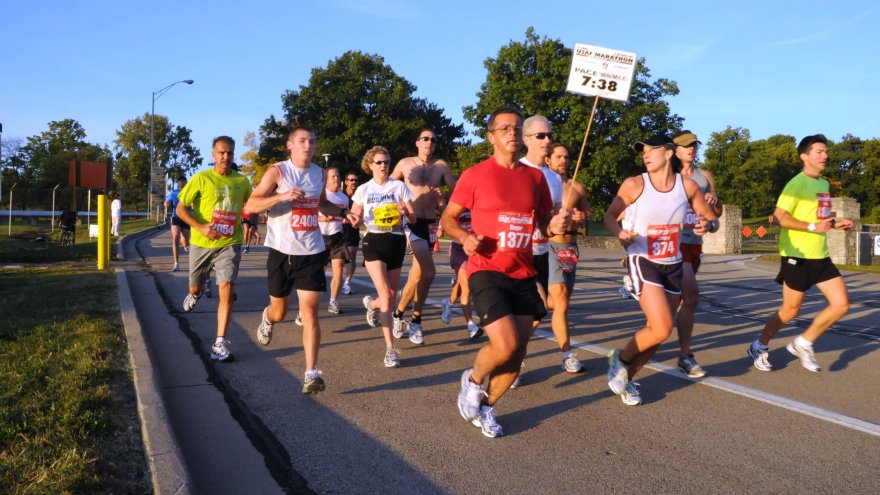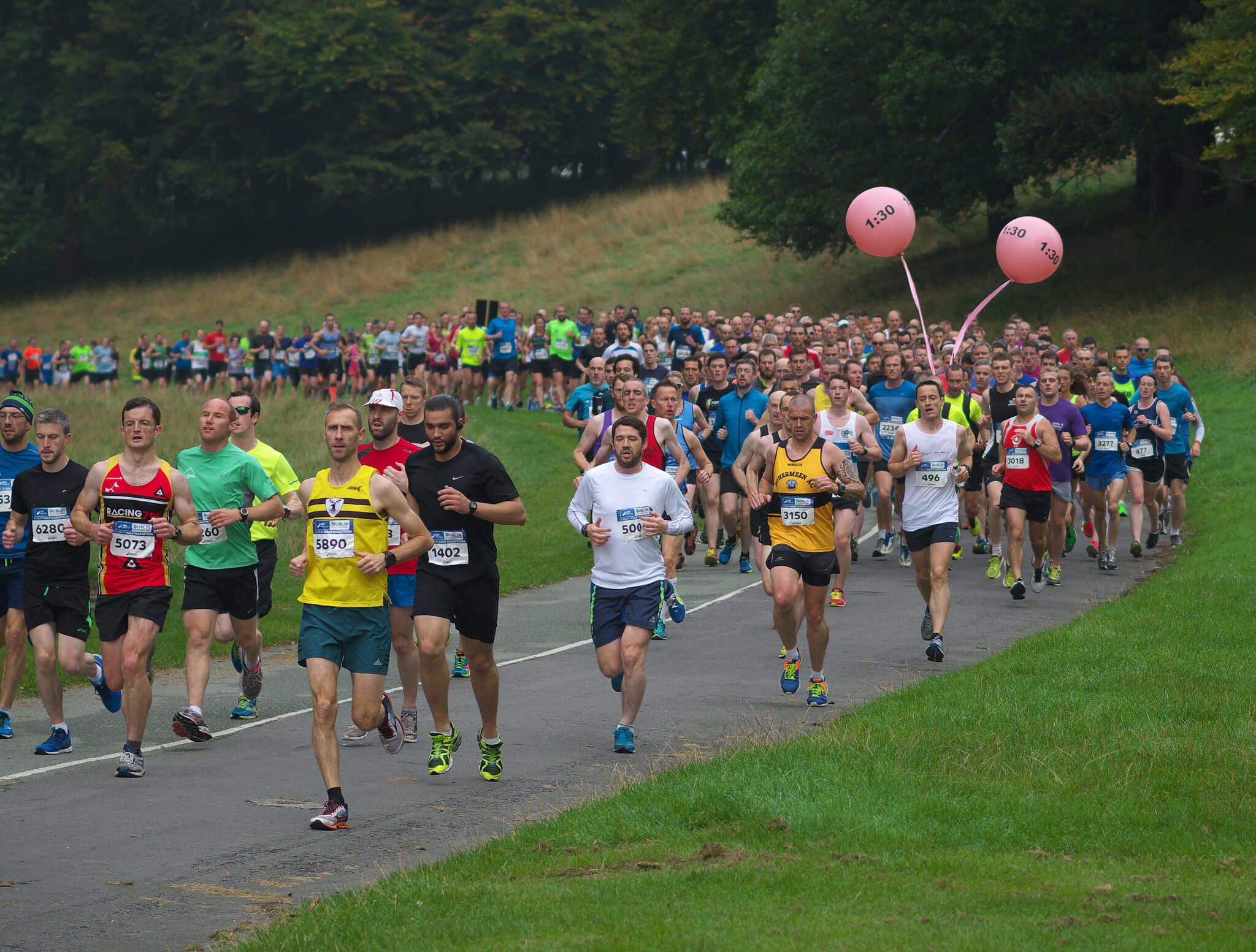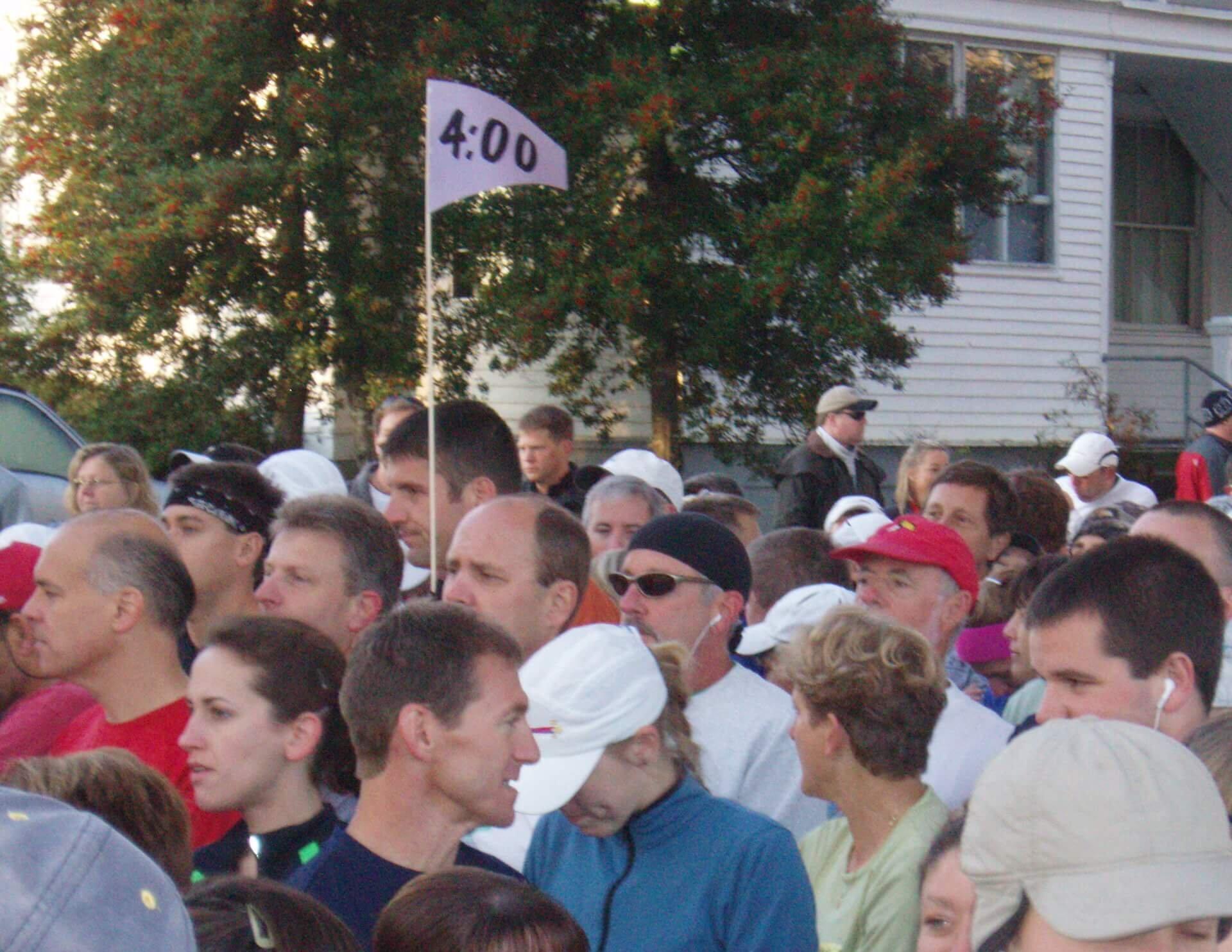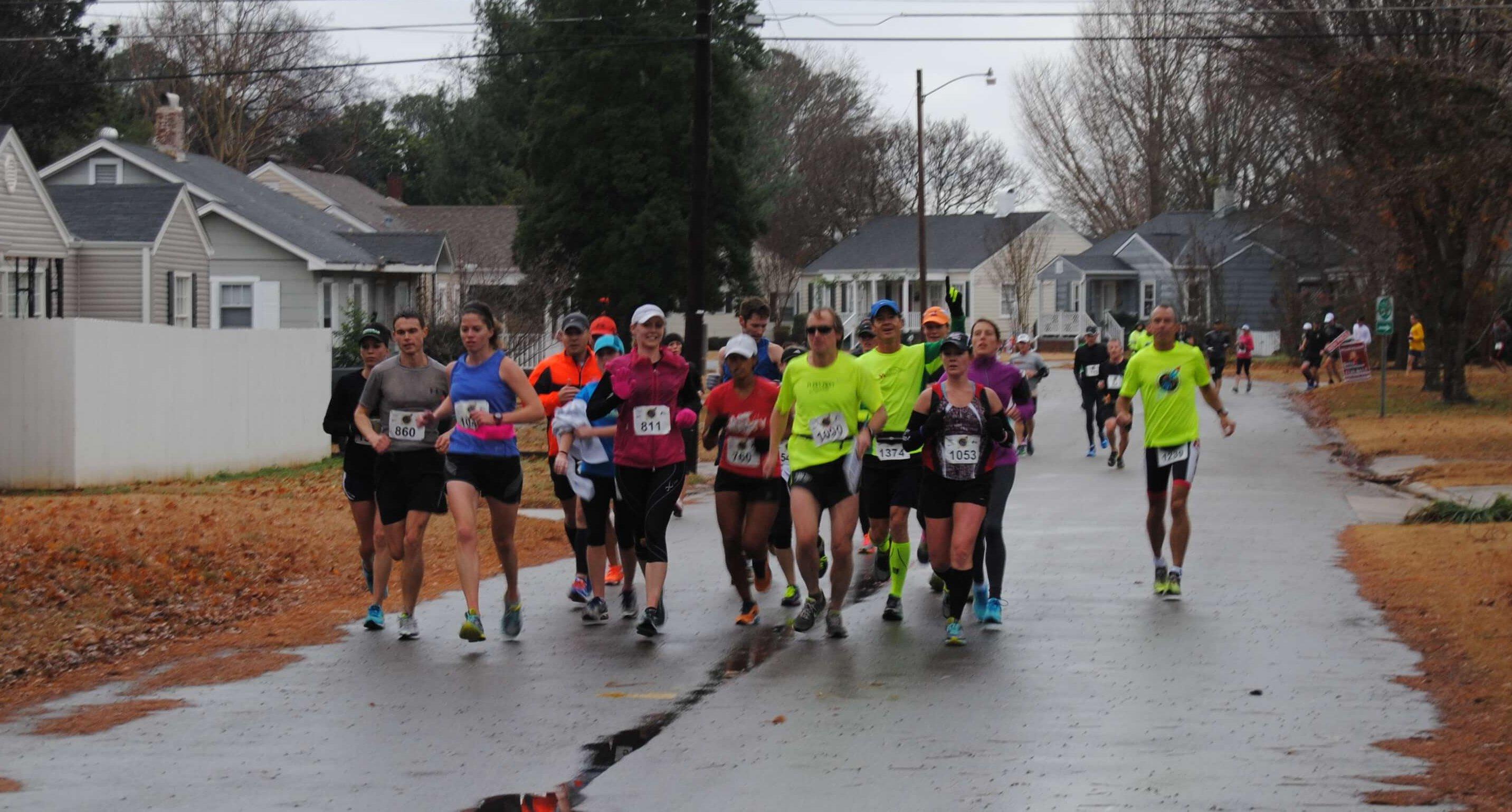Read This Before You Sign up to Be a Volunteer Pacer

Sometimes you need a change up in the normal routine and decide volunteering to pace for either a training group or a race is a great use of your time. As we all know, there are Personal Records (PRs) and Boston Qualifying (BQ) times that would not have happened without a good pacer. Not a friend from your running group jumping in to pace but a volunteer who offers to pace a bunch of people they don’t know either for weeks at a time or for a race (pressure is really on then). As with all things, there are pros and cons. If you ever thought you should pace, you should try it out since often it’s difficult for race and training organizers to find people willing to pace. So what exactly are you signing yourself up for?
The Pros
Everyone looks to you as the expert. While some might not think that’s a pro it can be a pretty stellar feeling. Plus, it’ll make all you trial and errors possibly benefit someone else. If you state Stinger Energy Gel is way better than Gu don’t be surprised if all of the sudden everyone is carrying Stinger.

You get free swag and other perks. From potential free race entries or waived training program fees, the possibilities are endless. Often pacers get a percentage off apparel and gear or an early shopping option for a sale. And frequent pacers who are asked to wear the same top, hat or outfit, may get the gear at no cost. There is no monetary compensation but the perk of getting to know the organizers of the race or program you are pacing for is priceless. It could make logistics down the road easier for you and place you “in the know”.
Your goals go by the wayside. A large rule for pacing is to leave your agenda at the door. When you pace you are running a pace that you can very easily maintain which code is also for slower than your normal pace. Could you imagine if you were using a pacer that was also trying to use the workout for something that distracted them from helping you? This run is a break for you. It’s for others. It can be a nice feeling getting out and adding fun mileage to help others.
You will meet some seriously cool people. Sometimes when we are chasing our own goals we don’t get out of our comfort group or pace and our little running world remains closed. Pacing and slowing down by even 30 seconds a mile can introduce you to some pretty badass people you would’ve otherwise have never met.

You also get to see the potential in people. Those that are ready to push but are afraid, you will have the ability to pull it out of them. Saying the right words of encouragement can really rocket people to a new running stratosphere. And the results of seeing them do so is incredible. There is nothing more fun than celebrating a running success that you helped cultivate even if just a little bit.
The Cons
Everyone thinks you are the expert. This was the first pro but it can be a con if you don’t set yourself up properly. Above all, be honest. You can give advice from personal experience and refer them to your favorite massage therapist, physical therapist or doctor. By no means promise or swear on anything that could get them injured or enhance an injury. And if you get some uncomfortable questions you can always feign ignorance or claim you’ve never had an issue and direct elsewhere.
You sort of need to know where you are going. For some this can be the biggest drawback, especially if they are directionally challenged or typically rely on someone (or something) else to do the navigating. The best advice for this is to do your homework. Study the maps. Know the course. You don’t want to look like an airhead who doesn’t know where they are going or worse, look like you don’t care. You are going to have to be aware especially if it is a route you aren’t used to running.
If you are training for something you have to make other time for you goals. Sometimes we leap before we look and if you committed to pacing and it interferes with one of your goals, that unfortunately is on you. You are going to have to reconfigure and make it work. Pacing for a training group that’s long runs are shorter and slower than you need to be doing for your long runs just means you are going to have to make it work. Use the pacing workouts as a recovery run and do your run the day before or use the pacing as a slow mileage day preceding your run. Alternatively, you can do negative splits after you send everyone on their way. There are always options.

The hover runner. This is the worst and if everyone is honest, they’ve been (accidently or purposely) this runner before. It’ll occur during training runs as a pacer but it will never happen then like it does during a race. We’ve all seen it, that pacer that has people absolutely stuck to them. You feel sorry for them, until you are them. Then you realize you have two choices, you can get in the zone and run or try to lose them. The second option is a joke but being closer to your runner comrades is something you need to mentally prepare for.
We all have met a few pacers we adore (and still keep in touch with) and a few we’d love to forget but there is no denying it is a commitment. And regardless of what distance or program you are pacing for you only need to be two things: kind and on pace.
Feature Image: Air Force photo by Al Bright
Latest Articles
 Is It OK to Use Trail Running Shoes on the Road?While trail running shoes can be used on roads, especially in situations where a runner encounters mixed terrains or pref...
Is It OK to Use Trail Running Shoes on the Road?While trail running shoes can be used on roads, especially in situations where a runner encounters mixed terrains or pref... Is Running on a Treadmill Easier Than Running Outside?Runners have their own preferences, whether it is treadmill running, running outside on the road, or exploring trails. So...
Is Running on a Treadmill Easier Than Running Outside?Runners have their own preferences, whether it is treadmill running, running outside on the road, or exploring trails. So... How to Fix Sore Quads After Running?Rest, ice, gentle stretching, and over-the-counter pain relievers can help soothe sore quads after running. Also, ensure ...
How to Fix Sore Quads After Running?Rest, ice, gentle stretching, and over-the-counter pain relievers can help soothe sore quads after running. Also, ensure ... 10 Fruits With The Most Electrolytes to Replace Sports DrinksThese fruits are high in electrolytes such as potassium, magnesium, and calcium, essential for hydration, muscle function...
10 Fruits With The Most Electrolytes to Replace Sports DrinksThese fruits are high in electrolytes such as potassium, magnesium, and calcium, essential for hydration, muscle function...

